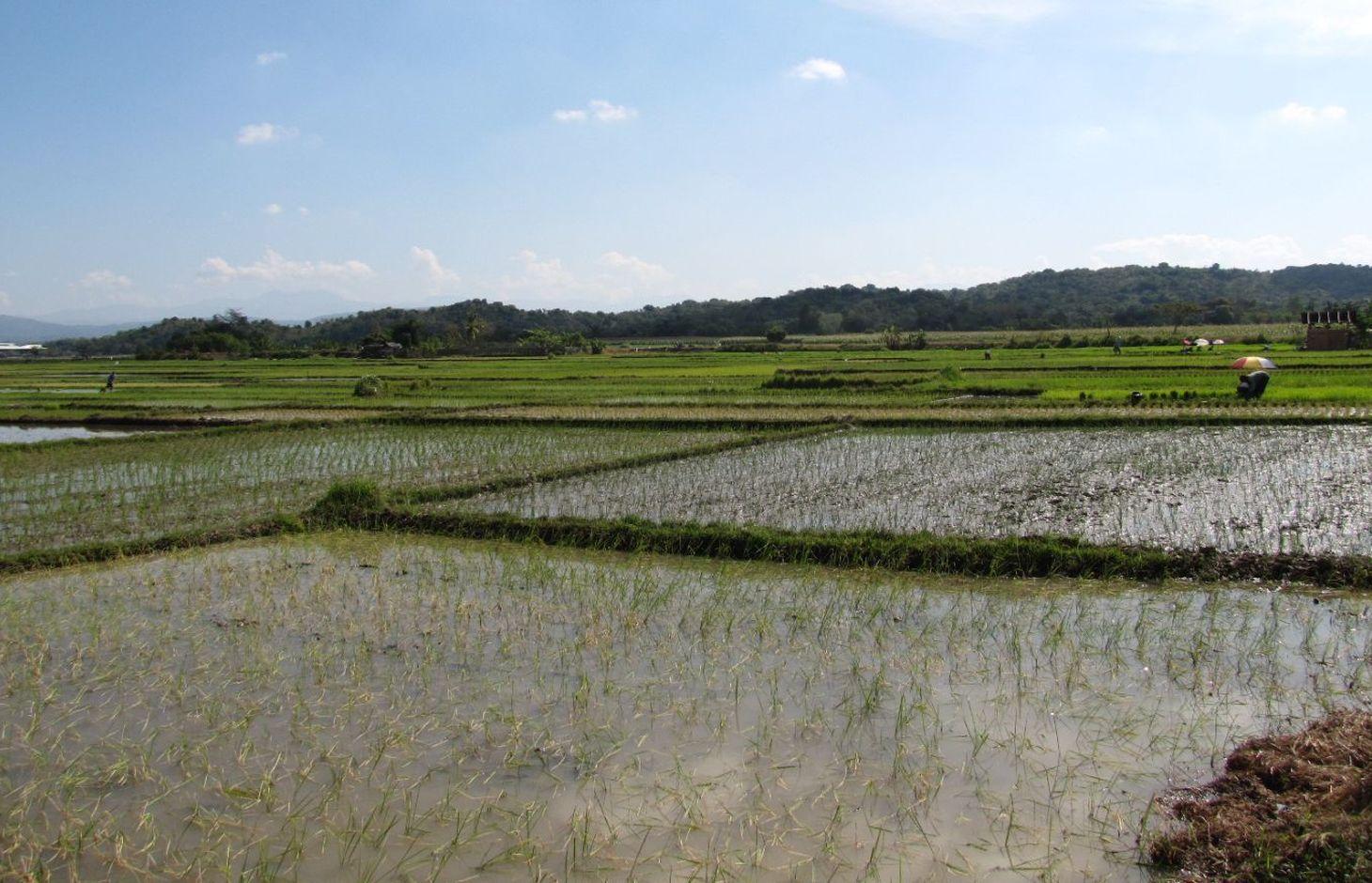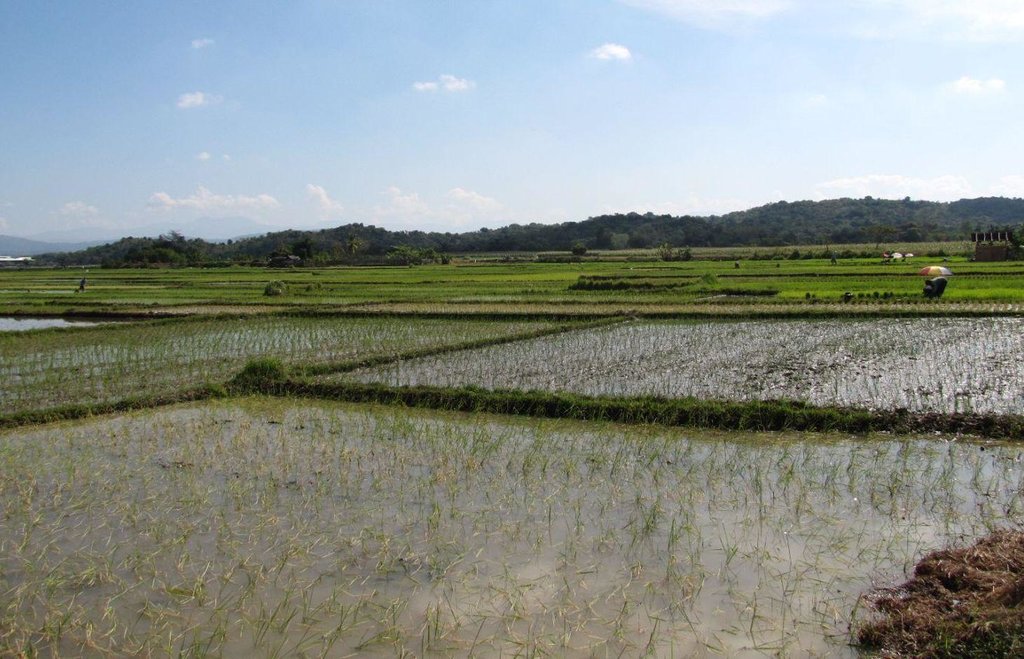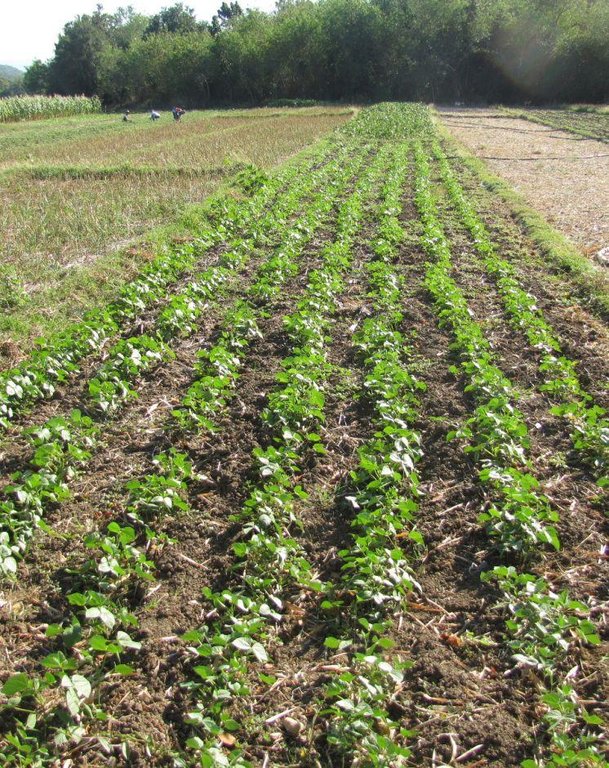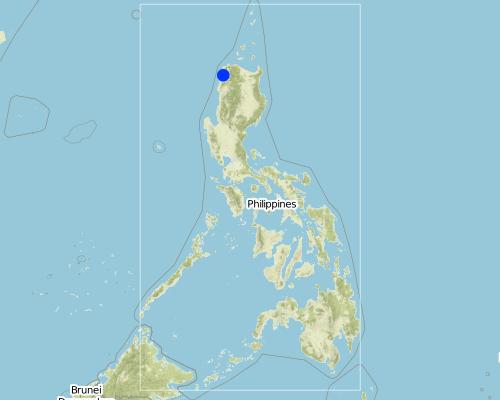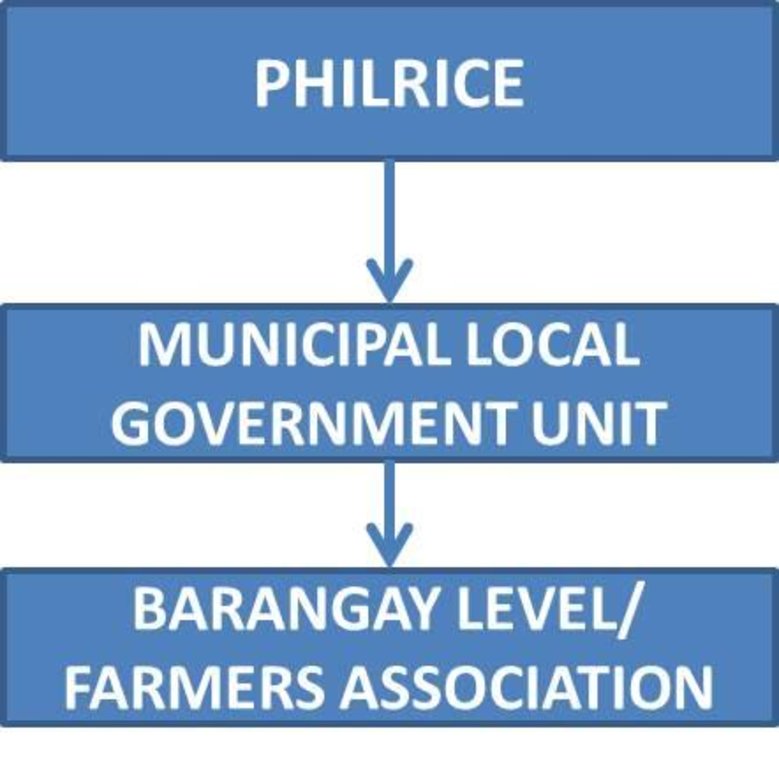Palayamanan: Climate Change Adaptation Strategy for Lowland Ecosystem [Filipinas]
- Criação:
- Atualização:
- Compilador/a: Philippine Overview of Conservation Approaches and Technologies
- Editor: –
- Revisor: Deborah Niggli
Palayamanan
approaches_1972 - Filipinas
Veja as seções
Expandir tudo Recolher tudo1. Informação geral
1.2 Detalhes do contato das pessoas capacitadas e instituições envolvidas na avaliação e documentação da abordagem
Pessoa(s) capacitada(s)
Especialista em GST:
Especialista em GST:
Corales Dr.Rizal G.
rg.corales@philrice.gov.ph
Philippine Rice Research Institute
Science City of Munoz
Filipinas
Especialista em GST:
Baradi Dr. Mary Ann U.
Philippine Rice Research Institute
Batac City
Filipinas
Nome do projeto que facilitou a documentação/avaliação da Abordagem (se relevante)
Decision Support for Mainstreaming and Scaling out Sustainable Land Management (GEF-FAO / DS-SLM)Nome da(s) instituição(ões) que facilitou(ram) a documentação/avaliação da Abordagem (se relevante)
Department of Agriculture-Region VIII (DA-8) - Filipinas1.3 Condições em relação ao uso da informação documentada através de WOCAT
Quando os dados foram compilados (no campo)?
10/03/2016
O compilador e a(s) pessoa(s) capacitada(s) aceitam as condições relativas ao uso de dados documentados através do WOCAT:
Sim
1.4 Referência ao(s) questionário(s) sobre tecnologias da GST
2. Descrição da abordagem de GST
2.1 Descrição curta da abordagem
Synergistic mix of farming ventures implemented by the farm family based on the existing environment and their resources to address food security, income instability, and sustainability.
2.2 Descrição detalhada da abordagem
Descrição detalhada da abordagem:
The objectives of the approach are the following: to improve resources allocation; to enhance biodiversity and ecological balance; to reduce production risks; and to increase cropping intensity, productivity, profitability, and economic stability. It also includes continuous food supply and higher income for land users. With Palayamanan, the farm is not just intended for rice. It is about food security, livelihood and empowering farmers to become better decision makers and resilient to climate change. It also aims to develop land users to become farmer-researchers, extension workers and entrepreneurs.
Methods: Participatory approach with the stakeholders/land users.
Implementation comprised the following stages: (1) Selection of the demonstration sites an farmer-partners; (2) Conduct participatory rapid appraisal on the sites; (3) Planning; (4) Conduct of training for the farmers (Farmers Field School) and for the Agricultural Extension Workers; (5) Establishment of the demonstration farm; (6) Monitoring and Evaluation; and (7) Human Resource Development for Farmers (to become farmer-researcher, extension worker, entrepreneur)
Stakeholders: A. Philippine Rice Research Institute (PhilRice): take the lead in the implementation of the program; facilitate the conduct of training;provide technical assistance to the program; and monitor the progress of the program.
B. Local Government Unit (Agriculture Office): provide support to the activities of the program; spearhead the dissemination and expansion of the program within their concerned municipality.
C. Farmer: participate in various activities of the program from planning to establishment; conduct on-site researches.
The approach introduced a systematized method of farm management involving technologies and practices to utilize available resources without compromising human health and environment. Some of the technologies incorporated under this approach are the following: crop rotation, aquaculture, waste recycling, diversified cropping, alternate wetting and drying, nutrient management, and integrated pest management.
2.3 Fotos da abordagem
2.5 País/região/locais onde a abordagem foi aplicada
País:
Filipinas
Região/Estado/Província:
San Nicolas, Dingras, Currimao, Ilocos Norte
Map
×2.6 Datas de início e término da abordagem
Indique o ano de início:
2001
Ano de término (caso a abordagem não seja mais aplicada):
2009
Comentários:
Introduced by the Philippine Rice Research Institute (PhilRice)
2.7 Tipo de abordagem
- Baseado em projeto/programa
2.8 Principais metas/objetivos da abordagem
The objectives of the approach are the following: to improve resources allocation; to enhance biodiversity and ecological balance; to reduce production risks; to increase cropping intensity, productivity, profitability, and economic stability. It also includes continuous food supply and higher income for land users. With Palayamanan, the farm is not just intended for rice. It is about food security, livelihood and empowering farmers to become better decision makers and resilient to climate change.It also aims to develop land users to become farmer-researchers, extension workers and entrepreneurs.
2.9 Condição que propiciam ou inibem a implementação de tecnologia/tecnologias aplicada(s) segundo a abordagem
Disponibilidade/acesso a recursos e serviços financeiros
- Propício
Organized the League of Sangguniang Bayan Chairperson for Agriculture to ensure the source of finance for the expansion areas
Quadro institucional
- Propício
LGUs were involved and invited during training, seminars and other activities related to the Palayamanan during the implementation to gain their support in the sustainability of the program; Organization of farmers association.
Conhecimento sobre GST, acesso a suporte técnico
- Propício
capacity building and training such as conduct of Farmers Field School.
3. Participação e papel das partes interessadas envolvidas
3.1 Partes interessadas envolvidas na abordagem e seus papéis
- Usuários de terra/comunidades locais
- Especialistas em GST/ consultor agrícola
- Governo local
Local Government Unit
3.2 Envolvimento do usuários de terra/comunidades locais nas diferentes fases da abordagem
| Envolvimento do usuários de terra/comunidades locais | Especifique quem estava envolvido e descreva as atividades | |
|---|---|---|
| Iniciação/motivação | Passivo | land users were informed about the program through technical briefing/consultation meetings |
| Planejamento | Participativo | PhilRice in consultation with the land users and LGUs |
| Implementação | Participativo | Land users have the option on what technologies they will implement with the technical assistance of PhilRice |
| Monitoramento/avaliação | Participativo | farm record keeping, testimonial during field day and Palayamanan Congress, land user as correspondent during project monitoring |
| research | Participativo | land users developed their own on-site research; they presented the results in a research study paper contest during Palayamanan Congress |
3.3 Fluxograma (se disponível)
Descrição:
PhilRice introduced and implemented the Palayamanan to one barangay per municipality. The concerned Local Government Unit through its Agriculture Office is responsible to radiate and expand the program to other barangays.
3.4 Decisão sobre a seleção de tecnologia/tecnologias de GST
Especifique quem decidiu sobre a seleção de tecnologia/tecnologias a serem implementadas:
- Principalmente usuários da terra, apoiados por especialistas em GST
4. Suporte técnico, reforço das capacidades e gestão do conhecimento
4.1 Reforço das capacidades/formação
Foi oferecida formação aos usuários da terra/outras partes interessadas?
Sim
Especifique quem foi capacitado:
- Usuários de terra
- Equipe de campo/consultores
- Agricultural Extension Workers
Tipo de formação:
- Em exercício
- Agricultor para agricultor
- Áreas de demonstração
- Reuniões públicas
Assuntos abordados:
Farmers Field School (FFS) were conducted to capacitate and inform the land users on various farming technologies (i.e. fertilizer, crop, water, and pest management) and entrepreneurship. Training also incorporated topics on post harvest and farm record keeping. There were also training of trainers (TOT) for farmers on rice production and other crops.
4.2 Serviço de consultoria
Os usuários de terra têm acesso a um serviço de consultoria?
Sim
Especifique se foi oferecido serviço de consultoria:
- Em centros permanentes
Descreva/comentários:
Advisory through Radio Program, Farmers served as correspondents
4.3 Fortalecimento da instituição (desenvolvimento organizacional)
As instituições foram fortalecidas ou estabelecidas através da abordagem?
- Sim, moderadamente
Especifique a que nível (níveis) as instituições foram fortalecidas ou estabelecidas:
- Local
Descreva instituição, papéis e responsabilidades, membros, etc.
The local government was not supportive in the early stage of the program but after witnessing the positive impact in the agricultural sector, they started to finance the establishment of training centers in the barangays. Agricultural technicians from the LGU were active in the sustainability of the program.
Especifique o tipo de apoio:
- Financeiro
- Reforço das capacidades/formação
- Equipamento
4.4 Monitoramento e avaliação
Monitoramento e avaliação são partes da abordagem?
Sim
Caso afirmativo, esta documentação é destinada a ser utilizada para monitoramento e avaliação?
Não
4.5 Pesquisa
A pesquisa foi parte da abordagem?
Sim
Especifique os tópicos:
- Economia/Marketing
- Ecologia
- Tecnologia
Dê mais detalhes e indique quem realizou a pesquisa:
Researches were conducted bu the Philippine Rice Research Institute (PHILRICE)
5. Financiamento e apoio material externo
5.1 Orçamento anual para o componente de GST da abordagem
Caso o orçamento exato seja desconhecido, indique a faixa:
- 2.000-10.000
Comentários (p. ex. principais fontes de recursos/principais doadores):
PhilRice 50%, LGU 20%, Farmers' association 30%
5.2 Apoio financeiro/material concedido aos usuários da terra
Os usuários da terra receberam apoio financeiro/material para a implementação de tecnologia/tecnologias?
Sim
Caso afirmativo, especifique tipo(s) de apoio, condições e fornecedor(es):
Subsidies from the government were given in terms of seedlings,training, tools and equipment.
5.3 Subsídios para entradas específicas (incluindo mão-de-obra)
- Equipamento
| Especifique quais entradas foram subsidiadas | Em que medida | Especifique os subsídios |
|---|---|---|
| Ferramentas | Parcialmente financiado | |
- Agrícola
| Especifique quais entradas foram subsidiadas | Em que medida | Especifique os subsídios |
|---|---|---|
| Sementes | Parcialmente financiado | |
| Fertilizantes | Parcialmente financiado | |
- Infraestrutura
| Especifique quais entradas foram subsidiadas | Em que medida | Especifique os subsídios |
|---|---|---|
| greenhouse, training center | Totalmente financiado | |
Se a mão-de-obra pelos usuários da terra foi uma entrada substancial, isso foi:
- Voluntário
5.4 Crédito
Foi concedido crédito segundo a abordagem para atividades de GST?
Sim
Especifique as condições (taxa de juros, reembolso, etc):
Credit was provided in terms of agricultural inputs (seeds and fertilizers) and is paid in cash after harvest. This payment will serve as revolving fund of the farmers association.
Especifique os destinatários do crédito:
Credit receivers are land users covered under the approach.
5.5 Outros incentivos ou instrumentos
Foram utilizados outros incentivos ou instrumentos para promover a implementação das tecnologias de GST?
Não
6. Análise de impactos e declarações finais
6.1 Impactos da abordagem
A abordagem auxiliou os usuários da terra a implementar e manter as tecnologias de GST?
- Não
- Sim, pouco
- Sim, moderadamente
- Sim, significativamente
There was a shift in the cropping system from mono cropping to diversified cropping resulted in the improvement soil properties. Through the approach, location specific rice-based farming technologies were developed to address the issue on climate change.
A abordagem concedeu autonomia aos grupos social e economicamente desfavorecidos?
- Não
- Sim, pouco
- Sim, moderadamente
- Sim, significativamente
Farmers were trained as extension workers to serve as resource speaker in training other farmers within their municipality. Through this, their confidence and self esteem, specially, in dealing with other people were developed. The approach introduced cost-saving and yield-enhancing technologies to optimize the farm operation.
A abordagem resultou em segurança alimentar aprimorada/nutrição melhorada?
- Não
- Sim, pouco
- Sim, moderadamente
- Sim, significativamente
The approach provided knowledge, as well as, experience to the land users that was eventually applied in improving their farming system to increase their farm production and income. Diversified farming sustain the farmer's food requirement and also generate income from the different crops and animals grown.
Did other land users / projects adopt the Approach?
- Não
- Sim, pouco
- Sim, moderadamente
- Sim, significativamente
Seventy percent (70%) of the land users within the area adopted the program because of the successful initial program implementation in the locality.
Did the Approach lead to improved livelihoods / human well-being?
- Não
- Sim, pouco
- Sim, moderadamente
- Sim, significativamente
Some of the land users who practice Palayamanan, namely Teresita Allado and Honorio Dela Cruz Jr., were named as farmer-scientists or “magsasaka-siyentista”. Due to this approach, other programs from government and non-government agencies were introduced and given to the land users. In addition, diversified cropping was practiced thus increasing the income of farmers which was used in the construction of their homes, buying of livestock and acquiring additional land for farming. Land users increased their risk taking ability or investing capacity towards farming.
6.2 Principal motivação dos usuários da terra para implementar a GST
- Produção aumentada
- Lucro (lucrabilidade) aumentado, melhora da relação custo-benefício
- well-being and livelihoods improvement
6.3 Atividades de sustentabilidade de abordagem
Os usuários da terra podem manter o que foi implementado através da abordagem (sem apoio externo)?
- Sim
Caso afirmativo, descreva como:
The approach would continue without the support from Philippine Rice Research (PhilRice) since the technologies were successfully transferred to the land users. The land users or farmer-partners recognized the positive impact and outcome of the technologies in their own farm areas. Moreover, farmer-partners were actively involved in the dissemination on the developed location-specific technologies.
6.4 Pontos fortes/vantagens da abordagem
| Pontos fortes/vantagens/oportunidades na visão do usuário da terra |
|---|
| Farmers' receptiveness to the technologies under the approach. |
| Land users were empowered due to the participatory approach of the program.They developed location specific technologies and practices and are confident in disseminating the knowledge to fellow farmers. |
| Pontos fortes/vantagens/oportunidades na visão do compilador ou de outra pessoa capacitada |
|---|
| Research studies conducted by the farmers. |
| Good monitoring activity during the implementation stage of the program. |
| Land users/farmer-partners were empowered since they have the option on what technologies they want to apply/used in their farm. |
| Strong cooperation among the implementing partners including PhilRice, LGUs, and farmer-partners in the sustainability of the approach through provision of technical assistance, construction of training centers, subsidy in agricultural inputs and other activities related to Palayamanan. |
6.5 Pontos fracos, desvantagens da tecnologia e formas de superá-los
| Pontos fracos/vantagens/riscos na visão do compilador ou de outra pessoa capacitada | Como eles podem ser superados? |
|---|---|
| Not fully strong collaboration from other agencies | Develop convergence among concerned specialists and agencies |
| Sustaining the farmer’s participation/attention | Selection/Assessment for identifying the potential beneficiaries |
| Inability to monitor the sustainability of the project due to no funding | Institutionalize who will monitor the sustainability of the project |
| No approved budget for the sustainability/exit plan of the program | Institutionalize who will monitor the sustainability of the project |
7. Referências e links
7.1 Métodos/fontes de informação
- visitas de campo, pesquisas de campo
- entrevistas com usuários de terras
7.2 Referências às publicações disponíveis
Título, autor, ano, ISBN:
PALAYAMANAN: A RICE-BASED FARMING SYSTEMS MODEL FOR SMALL-SCALE FARMERS, RG CORALES et al, 2005
Disponível de onde? Custos?
http://www.cabi.org/gara/FullTextPDF/2009/20093019315.pdf
Links e módulos
Expandir tudo Recolher tudoLinks
Não há links
Módulos
Não há módulos


